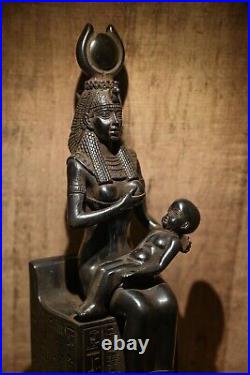
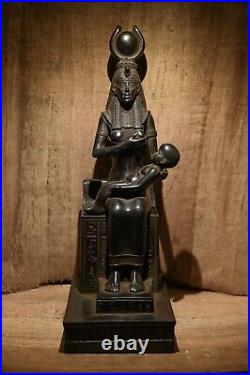
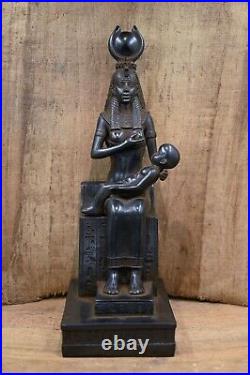
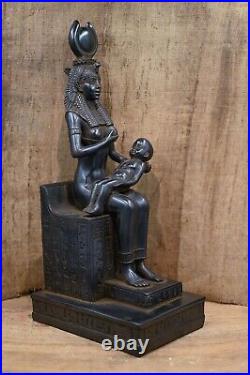
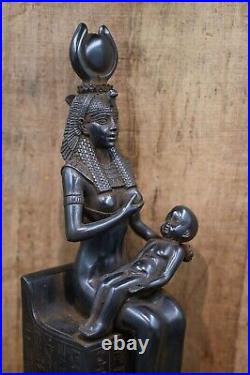
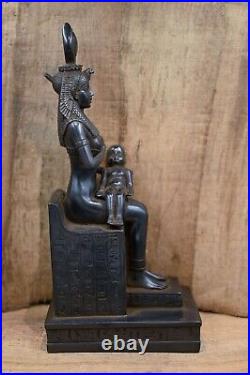
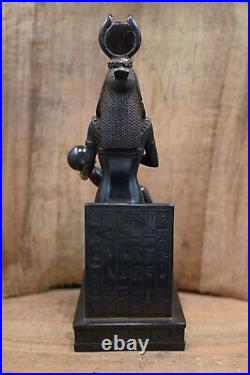
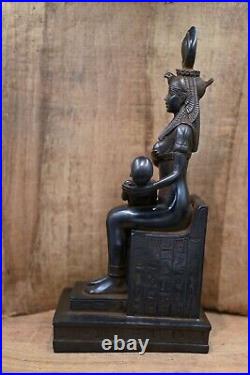
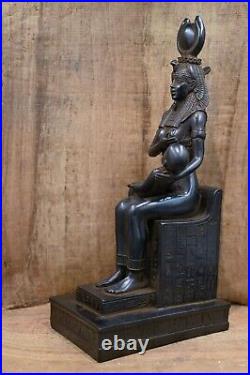
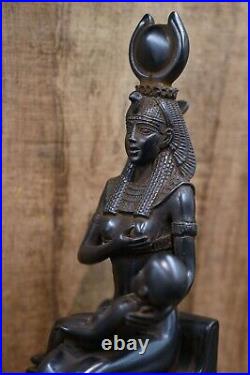
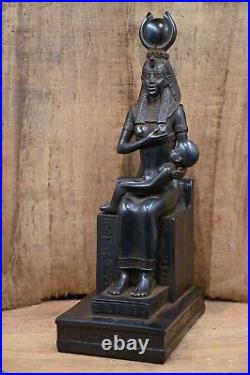
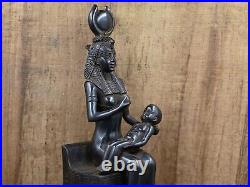
Weight: 0.665 kg. Welcome to our store! It is our pleasure to provide you with reproductions of Pharaonic inspired by the Ancient Egyptians. None of our products are antiques; they are modern creations inspired by ancient ones. All our pieces are hand, Egypt, including the base materials. Additional details can be confirmed with us directly before placing your order. Please visit our store to check out other items for sale! Thank you for shopping at our store. Isis was a major goddess in ancient Egyptian religion whose worship spread throughout the Greco-Roman world. Isis was first mentioned in the Old Kingdom c. She was believed to help the dead enter the afterlife as she had helped Osiris, and she was considered the divine mother of the pharaoh, who was likened to Horus. Her maternal aid was invoked in healing spells to benefit ordinary people. Originally, she played a limited role in royal rituals and temple rites, although she was more prominent in funerary practices and magical texts. She was usually portrayed in art as a human woman wearing a throne-like hieroglyph on her head. During the New Kingdom c. In the first millennium BCE, Osiris and Isis became the most widely worshipped of Egyptian deities, and Isis absorbed traits from many other goddesses. Rulers in Egypt and its neighbor to the south, Nubia, began to build temples dedicated primarily to Isis, and her temple at Philae was a religious center for Egyptians and Nubians alike. Isis’s reputed magical power was greater than that of all other gods, and she was said to protect the kingdom from its enemies, govern the skies and the natural world, and have power over fate itself. The worship of Isis was ended by the rise of Christianity in the fourth and fifth centuries CE. Her worship may have influenced Christian beliefs and practices such as the veneration of Mary, but the evidence for this influence is ambiguous and often controversial. Isis continues to appear in Western culture, particularly in esotericism and modern paganism, often as a personification of nature or the feminine aspect of divinity.